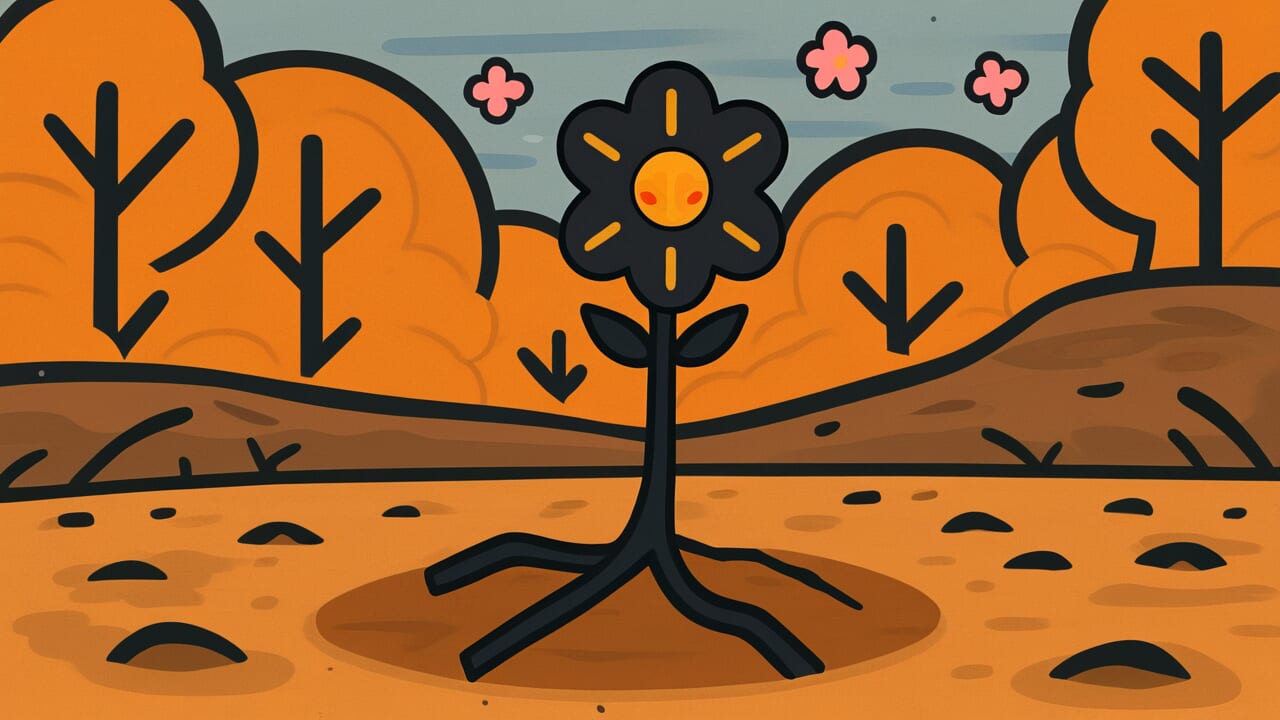How to Read “Dead wood and cold ashes bloom with flowers”
Koboku shikai hana hiraku
Meaning of “Dead wood and cold ashes bloom with flowers”
“Dead wood and cold ashes bloom with flowers” describes a miraculous scene. It speaks of completely dead wood and cold ashes that have lost all traces of fire blooming with flowers again.
This proverb represents something that seemed destroyed coming back to life.
People use this saying when describing miraculous comebacks from desperate situations. A company on the verge of bankruptcy makes a stunning recovery.
A person given only months to live regains their health. A declining cultural tradition suddenly captures public attention again.
These are moments when everyone thought “it’s over,” but dramatic revival happened anyway.
Why use this expression instead of simple words like “recovery” or “revival”? Because it captures both the depth of despair and the drama of comeback simultaneously.
Even today, people use these powerful words when dreams nearly abandoned come true. When possibilities thought lost suddenly open up again, this saying conveys that deep emotion perfectly.
Origin and Etymology
The exact origin of this proverb has several theories. However, its structure reveals fascinating background. Notice how it uses two contrasting images: “dead wood” and “cold ashes.”
Dead wood means trees that have lost their life. They seem incapable of sprouting again.
Cold ashes refer to ashes where fire has completely died and cooled. Since ancient times, fire symbolized life force. Ashes where fire completely died became a metaphor for lost vitality.
Combining these two elements emphasizes a state that seems “completely finished.” Then adding “bloom with flowers,” which represents life’s renewal, expresses dramatic transformation from desperate circumstances.
This saying likely reflects influence from Chinese classical thought, especially Taoism and Buddhism. These philosophies have cyclical worldviews at their foundation—death and rebirth, decline and revival.
Ancient observers watched nature’s cycles of death and regeneration. They saw the same principles in human destiny and society’s rise and fall. This observation probably inspired such expressions.
Usage Examples
- A traditional inn near bankruptcy is now fully booked thanks to the young successor’s ideas—truly “Dead wood and cold ashes bloom with flowers”
- A childhood friend I hadn’t heard from in ten years suddenly contacted me and we reconnected—this is exactly “Dead wood and cold ashes bloom with flowers”
Universal Wisdom
The proverb “Dead wood and cold ashes bloom with flowers” contains humanity’s enduring faith in hope. Why do people believe in revival even when situations seem completely finished?
Because humans fundamentally resist accepting “the end.” Throughout history, we’ve faced desperate situations countless times. War, famine, plague, natural disasters.
Yet each time, humanity stood up and started walking again. This accumulated experience nurtured the belief that “no matter how desperate things look, revival remains possible.”
This proverb endures not because it’s mere optimism. It describes reality that actually happens. Look at nature—trees that seem dead in winter sprout in spring.
Land burned to ash by volcanic eruptions eventually turns green again. Human society works the same way.
Dynasties thought destroyed have been restored. Forgotten technologies get rediscovered. Lost cultures breathe again. History contains countless such examples.
This wisdom gives people “the power not to give up.” When standing at despair’s edge, remembering these words brings courage to stand once more. That’s the true power this proverb holds.
When AI Hears This
Viewing dead wood blooming through complexity science reveals surprising facts. Wood appearing dead actually exists in a special state called “critical state.”
This resembles experiments dropping sand grains one by one onto a pile. Nothing happens at first, but suddenly a large avalanche occurs.
The sandpile just before looks motionless, yet inside countless grains support each other in delicate balance.
Dead wood works similarly. Surface activity has stopped, but at cellular level water redistributes, nutrients accumulate, dormant buds prepare. Invisible changes steadily approach a “critical point.”
When temperature or sunlight crosses a threshold, scattered elements trigger chain reactions simultaneously. Flowers—highly organized structures—”emerge.” This represents new properties born from the whole system, unexplainable by simple addition of parts.
Human stagnation periods might work the same way. Times feeling unproductive are actually critical states where knowledge reorganizes in the brain and experiences integrate.
Sudden ideas or growth realizations are evidence that invisible preparation crossed thresholds and caused emergence.
Lessons for Today
This proverb teaches modern people that situations seeming like “the end” actually contain seeds of new beginnings.
Modern society changes rapidly. We experience setbacks and failures repeatedly. Career disappointments, broken relationships, health problems, financial difficulties.
Sometimes we feel “it’s over.” However, “Dead wood and cold ashes bloom with flowers” warns against giving up too soon.
What matters is not being fooled by apparent “endings.” Experience you’ve accumulated, abilities you’ve developed, relationships you’ve built—these never simply disappear.
They exist like dead wood’s roots, invisible from the surface but certainly still there.
Today’s difficulties might be preparation periods for tomorrow’s success. Days feeling like cold ashes are actually times storing energy for the next blooming.
So whatever harsh circumstances you face, believe possibility seeds remain. That faith itself becomes the power making you bloom again.



Comments